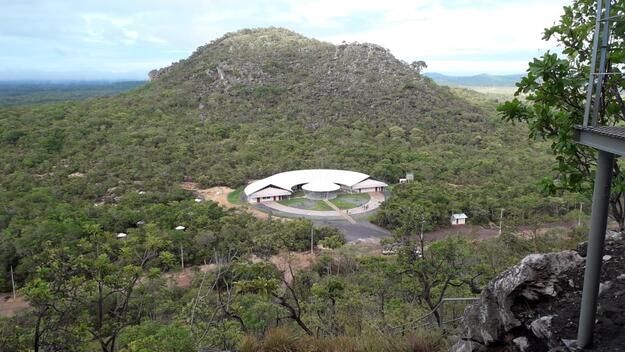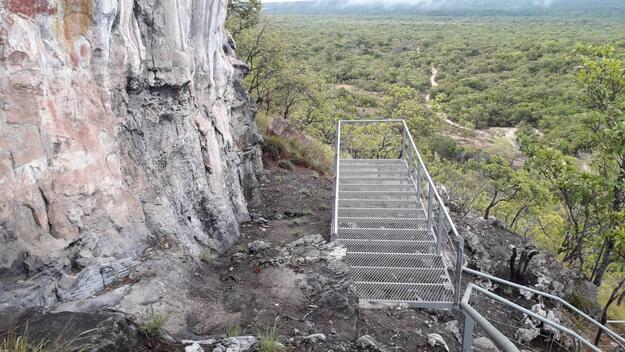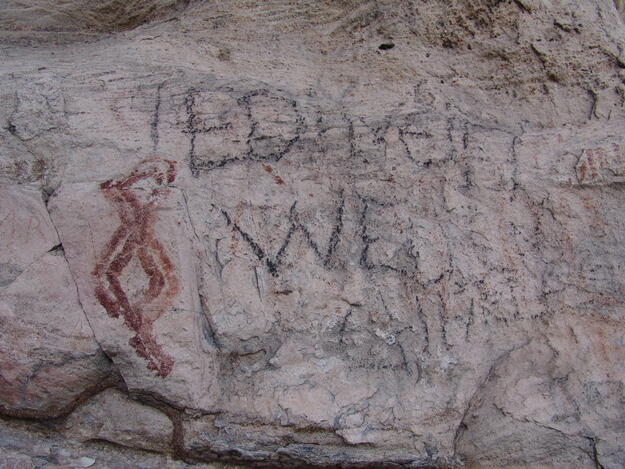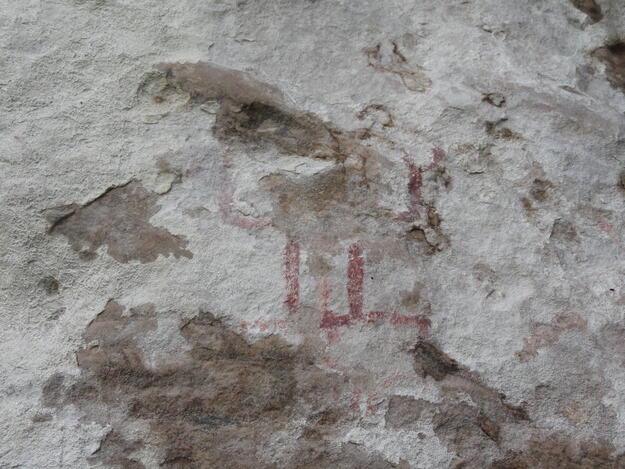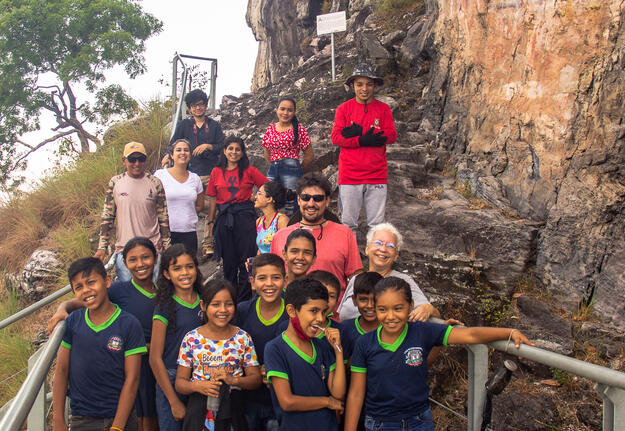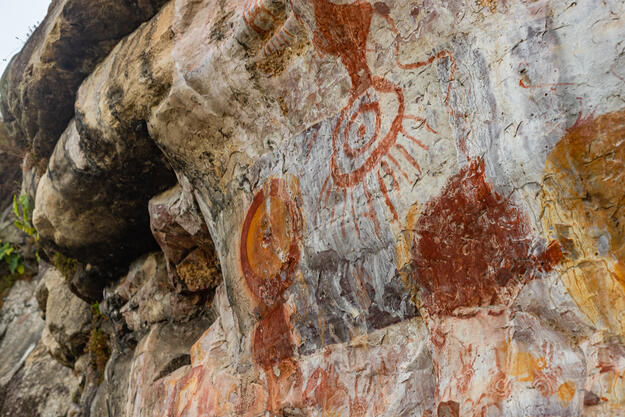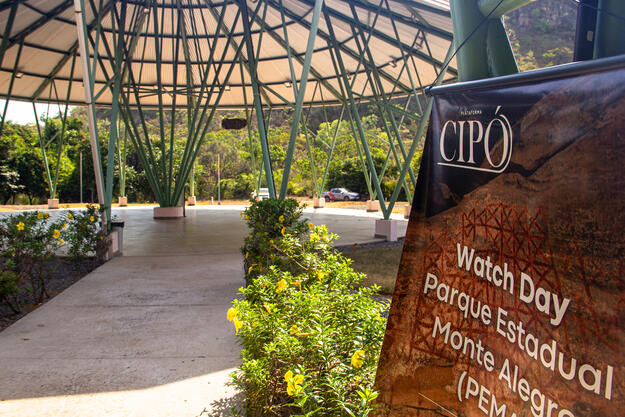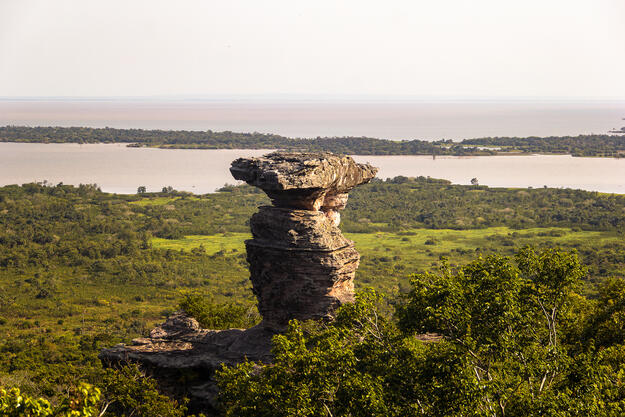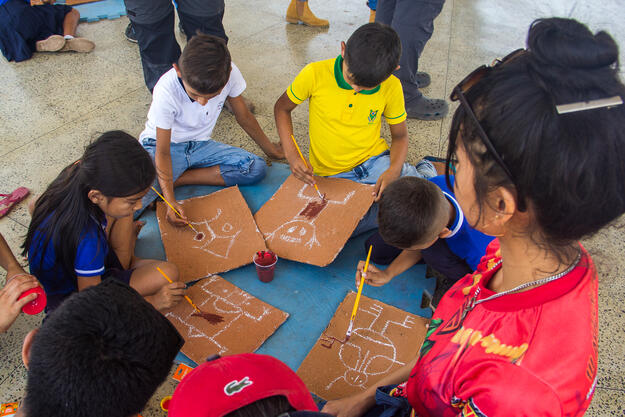Monte Alegre State Park
Site History and Significance
One of the Oldest Occupied Sites in the Americas
Monte Alegre State Park, located on the north bank of the Amazon in the Brazilian state of Pará, is home to one of the largest and oldest concentrations of rock art in the Amazon basin. There are many significant examples in caves and rock shelter throughout the Park, including the Pedra Pintada, or Painted Rock, which was first occupied by humans around 12,000 years ago, making it one of the oldest occupied sites in the Americas. Its early occupants painted symbols in bold red and yellow on the walls of the cave, using pigments whose chemical composition matches that of other finds from the site that can be securely dated. By the sixth or fifth millennium BCE, later inhabitants of the cave were producing ceramics thought to be the oldest known in South or North America. These and other discoveries from the Amazon have served to challenge the disparaging view of the Amazon region as only sparsely populated by communities lacking the capacity for cultural and technological evolution.
The protected area around Monte Alegre was established in 2001 to protect the region’s environmental and archaeological heritage. Creation of the park also imposed restrictions on permitted activities, resulting in skepticism towards its aims on the part of nearby Indigenous and quilombola, or Afro-Brazilian, populations. In the intervening years, however, Monte Alegre State Park has become the main visitor attraction in the region, constituting a new source of local income associated with tourism, including guided tours, restaurants, and transportation. Additionally, a 2012 campaign to disseminate archaeological knowledge has led to better understanding of the park’s significance.
Overcoming Environmental and Human Threats
These developments notwithstanding, rock art at Monte Alegre continues to face a number of environmental and human threats, including degradation of the forest environment brought on by the expansion of agriculture and cattle ranching in the lower Amazon. At the same time, climate projections for drier conditions in the future highlight an increasing risk of wildfires. These factors can threaten the preservation of known archaeological locations as well as sites that are yet to be documented and studied by archaeologists, whose ranks increasingly include Indigenous researchers.
Local efforts now seek to address all these interconnected challenges. New signage installed in 2020 thanks to Brazil’s Institute for Historical and Artistic Heritage was meant to improve the visitor experience, but the COVID-19 pandemic dramatically reduced tourism soon after. Additional proposals include training for local individuals working as registered tour guides, educational activities to raise awareness and appreciation amongst schoolchildren, enhanced documentation, and development of strategies to adapt to the increased environmental risks created by a changing climate, such as the threat of fires.
2022 Watch Day
This past fall, Monte Alegre State Park (PEMA) celebrated Watch Day organized by Plataforma CIPÓ and local archaeologists. During Monte Alegre's Watch Day, children from the neighboring Park, Lages, Santana, and Ererê communities participated in a series of activities to promote PEMA’s archaeological heritage.
2022 World Monuments Watch
The 2022 World Monuments Watch seeks to support all local efforts to improve the protection of Monte Alegre State Park and secure local benefits for surrounding communities.
![]()
Learn more
Through the World Monuments Watch, WMF collaborates with local partners to design and implement targeted conservation programs—including advocacy, planning, education, and physical interventions in the historic built environment—to improve human well-being through cultural heritage preservation.
Sign up for our newsletter to receive regular updates on our projects, stories from the field, upcoming events, and more!
![]()

